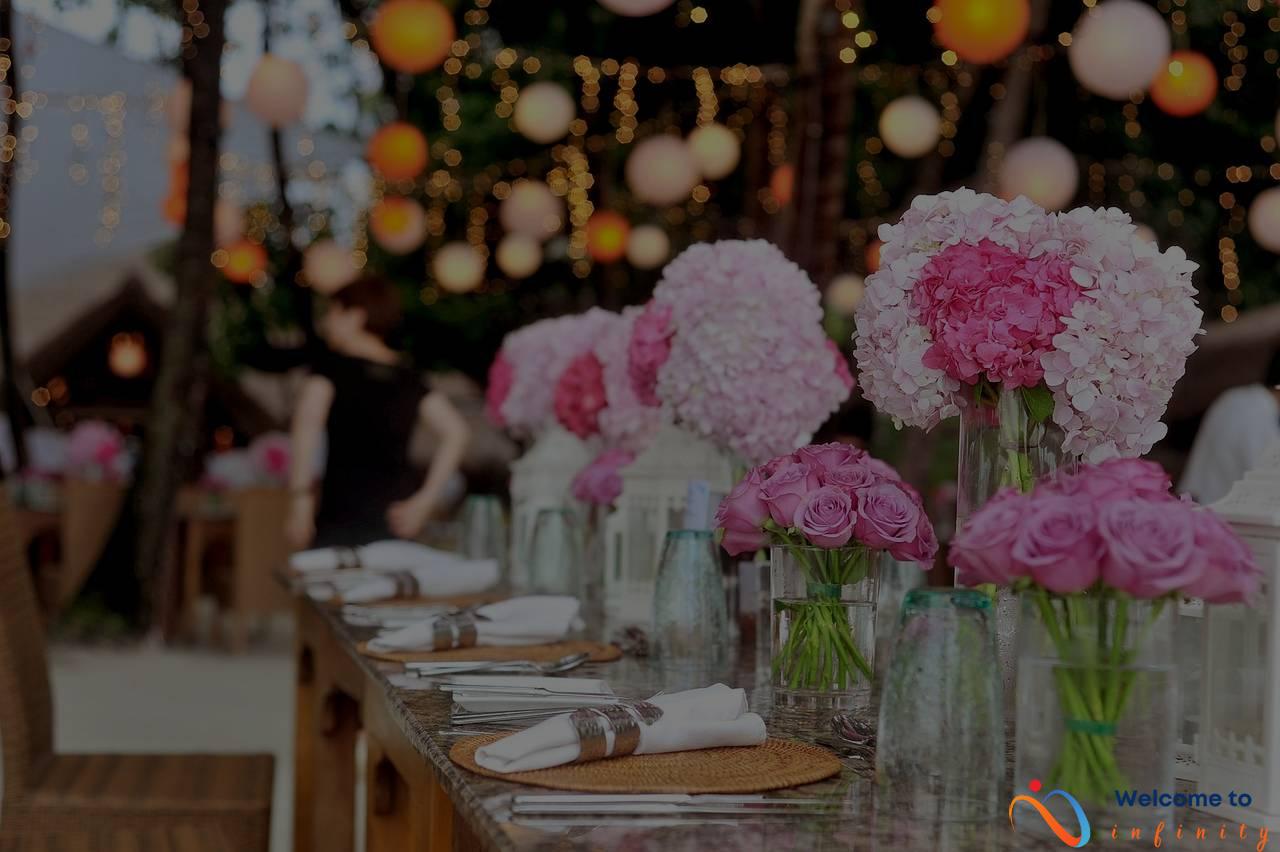If you're looking for a fresh way to add some impact and personality to your home's interior, colour blocking might be the perfect solution for you. Colour blocking is a technique that involves using contrasting colours together to create a bold and cohesive design statement. In this how-to guide, you'll learn everything you need to know about colour blocking to help you achieve a stunning interior design scheme.
Colour blocking is a popular trend in fashion as well as interior design, and involves pairing colours that sit on opposite sides of the colour wheel. This means that you're not just using colours that look nice together, but colours that are complementary and create a striking contrast. Colour blocking can be used on walls, furniture, and accessories, and provides endless possibilities for creating unique and personalised interiors.
To get started with colour blocking, it's important to choose colours that work well together and complement the mood and style of your space. You can use colour psychology to help you select contrasting colours that evoke specific emotions or moods, or simply choose colours that align with your personal preferences. Don't be afraid to experiment and try different colour combinations until you find the perfect match for your home.
What is Colour Blocking?
Colour blocking is a design technique that involves pairing contrasting colours to create a bold and striking visual statement. This design technique has been used in fashion for years but has started to gain popularity in interior design as well. The idea as a whole is to highlight certain elements of the room by using a contrasting color. You can use this technique in all areas of your home, from the living room to the bedroom to the kitchen.
Colour blocking can be used in a variety of ways, from painting walls to choosing furniture and accessories. The technique can be used in a variety of different ways to achieve different effects. For example, a room with a neutral color scheme can be made bolder and more visually striking by adding pops of bold colour through furniture or décor elements.
Colour blocking in interior design can be as simple or complex as you want it to be. It can easily be incorporated into your décor without having to make much change to your existing design scheme. Depending on how you want to use it, colour blocking can be used to create a cohesive design scheme or to add contrast and interest to a room.
Choosing Colours
Colour blocking is all about choosing contrasting colours to create a striking design statement. When deciding on which colours to use for your interior design, it's important to pick shades that work well together to achieve a bold and cohesive look. Here are some tips to help you select the right colours:
- Consider the mood you want to create in the room. Are you looking for a warm, cozy feeling or a bright and energetic vibe?
- Think about the existing elements in the room, such as furniture and accessories, and choose colours that complement them.
- Use a colour wheel to help you choose complementary colours that are opposite each other on the wheel.
- Alternatively, use analogous colours, which are next to each other on the wheel, for a more subtle effect.
- Don't be afraid to mix patterns and textures with your chosen colours to add depth and interest to the design.
Remember, the key is to choose colours that not only contrast with each other but also work together harmoniously. Take time to experiment with different colour combinations until you find the perfect balance between boldness and cohesion.
Colour Psychology
Colour plays a crucial role in interior design and can greatly impact the overall mood and atmosphere of a room. Understanding the basics of colour psychology can help you choose colours that evoke a specific emotion or mood for your desired design concept.
Warm colours like red, orange, and yellow are known to evoke feelings of energy and excitement, making them perfect for social spaces like the living room or kitchen. Cool colours like blue, green, and purple, on the other hand, create a calm and relaxing environment, perfect for bedrooms or bathrooms.
Neutral colours like white, gray, and beige are great for creating a sense of balance and harmony in a room. They also serve as a perfect backdrop for bold and vibrant accent colours, allowing them to stand out and make a statement.
It's essential to keep in mind that different shades and tones of colours can also create different moods. For example, a soft pastel blue can create a serene and tranquil atmosphere, while a brighter electric blue can evoke feelings of excitement and energy.
When choosing colours for your home, it's important to consider the intended purpose of the room and the emotions you want to evoke. Using contrasting colours with the right balance can create a beautiful and impactful design that will enhance your overall home interior scheme.
- Red – Energy, excitement, passion, and danger
- Green – Calmness, nature, freshness, and growth
- Yellow – Happiness, optimism, warmth, and energy
- Blue – Peace, trust, serenity, and loyalty
- Purple – Royalty, luxury, mystery, and creativity
- Orange – Fun, warmth, enthusiasm, and optimism
- Gray – Balance, neutrality, practicality, and sophistication
- White – Purity, cleanliness, innocence, and simplicity
- Black – Elegance, sophistication, power, and mystery
By understanding the role of colour and its impact on mood and emotions, you can use it to create a beautiful and personalized interior design that reflects your unique style and personality.
Room-By-Room
If you're ready to take the plunge into colour blocking, you might be wondering where to begin. One great approach is to start by adding pops of bold hues in different areas of your home. Here are some tips on how to color block in different rooms:
- Choose two contrasting colours and use them in the room's decorative textiles, such as curtains, throw pillows and rugs.
- Introduce a statement piece, like an accent wall or a bold-patterned sofa to really make the room stand out.
- Select calming shades like blues, greens, and greys which are perfect for a bedroom.
- Bring in pops of colour through small accessories like lamps, wall art, and bedding.
- Use contrasting colours in your kitchen's backsplash tiles or for your cabinets and countertops.
- If you have an open-concept kitchen, consider using colour blocking to visually divide the space between your kitchen and living room.
Remember, you don't have to go all out with colour blocking in every room. Start with one area and work your way up to see what works best for you.
Furniture and Accessories
When it comes to incorporating colour blocking into your home decor, furniture and accessories play a key role in tying the entire concept together. Whether it's choosing a bold accent chair or adding colourful throw pillows to a neutral sofa, there are many different ways to incorporate contrasting colours into your furniture and accessories.
Start by selecting a colour scheme for your room and then choose a statement piece of furniture that showcases your chosen colours. For example, a bright yellow accent chair in a room with navy blue walls can create a stunning focal point. From there, add smaller accessories in complementary colours to achieve a harmonious look that brings your design concept together.
Don't be afraid to mix different textures and patterns to add visual interest to your room. For example, a velvet blue sofa combined with a geometric patterned rug and a sleek metal coffee table can create an eclectic yet cohesive look.
If you're working with a neutral colour scheme, consider adding pops of colour through your furniture and accessories. This can be done by incorporating colourful artwork, throw blankets, or even statement lamps to add visual interest and a touch of personality to your space.
When it comes to colour blocking, there are no hard and fast rules – it's all about finding the right balance and creating a look that speaks to your personal style. By incorporating both large and small accents into your space, you can create a customised look that's both bold and cohesive.
Walls and Paint
When it comes to colour blocking, the walls of your home are a perfect canvas for this design trend. However,simply painting entire walls different colours can be overwhelming and become too much for the eye to handle. Here are some tips for painting large elements such as walls or accent ceilings to emphasise the intended design impact:
- Select which wall you want to be the focal point of the room and paint it in a bold, bright shade that contrasts with the other walls. This creates an illusion of depth and makes the room appear larger than it actually is.
- For a subtler approach to colour blocking, use a coloured accent wall to create a dynamic effect that ties in your design aesthetic without overwhelming your space. For instance, you can paint the north wall of a north-facing room in a warm colour to make the room appear brighter.
- Choose a neutral shade or a lighter shade of the bold colour for the adjacent wall to balance out the design scheme. This creates a harmonious flow between the different colours while highlighting the focal wall.
When it comes to ceilings, consider painting it in the same shade as the walls to create a visual impact. This effect can make the room appear taller or more spacious than it actually is. Alternatively, a lighter shade on the ceiling will make the ceiling appear higher. Accentuating ceilings can be tricky, but it can certainly be done with some creativity and the right colours.
The key to colour blocking is finding the right balance between bright and neutral tones. It allows you to take your interior design to a whole new level. With these tips for painting the walls and ceilings in your home, you can transform your living space into a statement piece of its own.
Balancing Act
If you're planning on implementing colour blocking into your home interiors, it's important to remember that balancing bold colours with neutral elements is key to achieving harmony and balance. A room that is composed entirely of strong, contrasting colours can quickly become overwhelming and chaotic.
To balance a bold colour scheme, introduce neutral accents such as white, beige or grey into the design. These colours will provide a visual break from the bold colours and add a sense of calm to the space. Consider incorporating neutral elements through larger design features such as furniture, walls or curtains. Alternatively, small accent pieces such as neutral-coloured pillows or lampshades can be used to provide balance and harmony.
When considering the balance of colours and neutrals, also take into account the amount of natural light the space receives. A room that lacks natural light may benefit from lighter neutral pieces to keep the space feeling bright and open. On the other hand, a room that receives an abundance of light may require more neutral elements to avoid the design becoming too busy.
It's important to remember that while a colour scheme can add excitement and personality to a space, too much of a good thing can quickly become overwhelming. The key to achieving balance in your overall design scheme is to use bold colours alongside neutral elements in a thoughtful and deliberate way.












